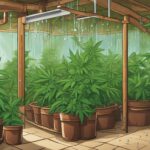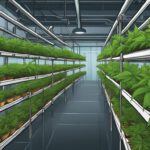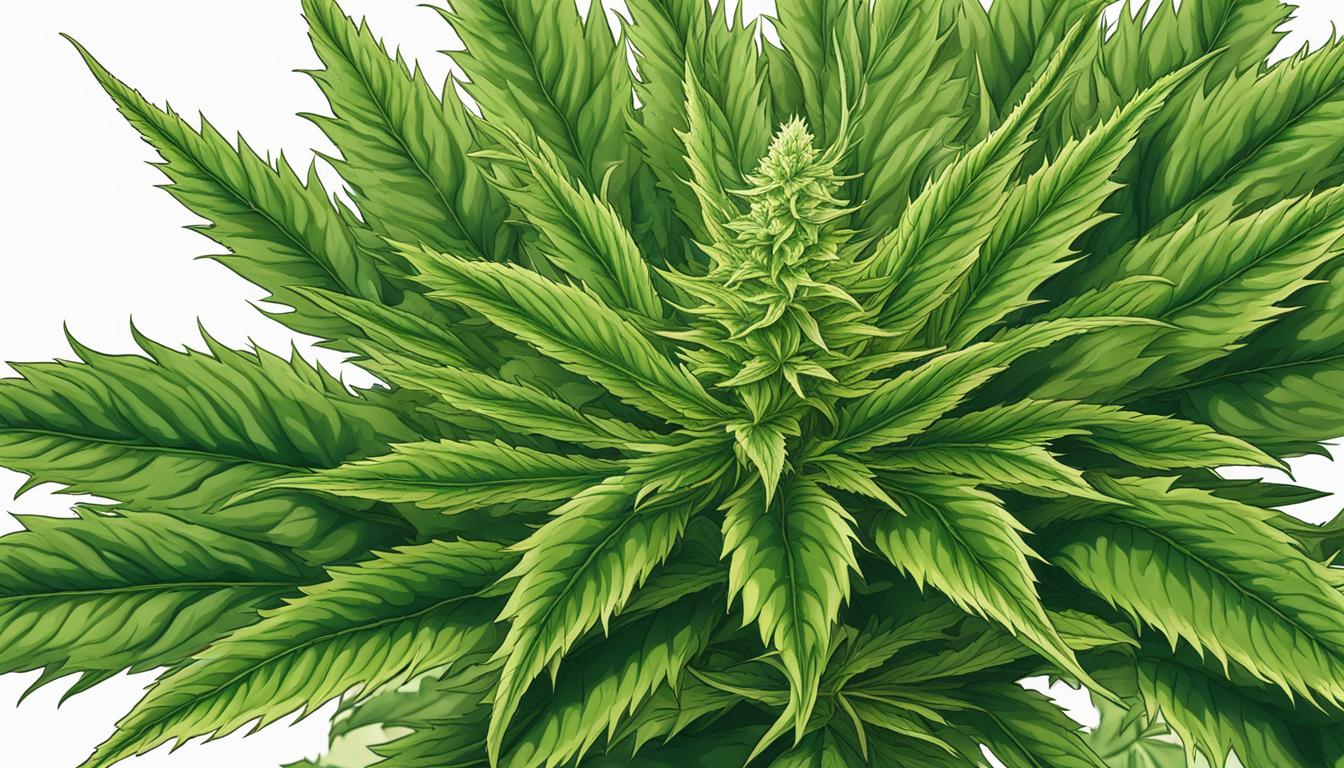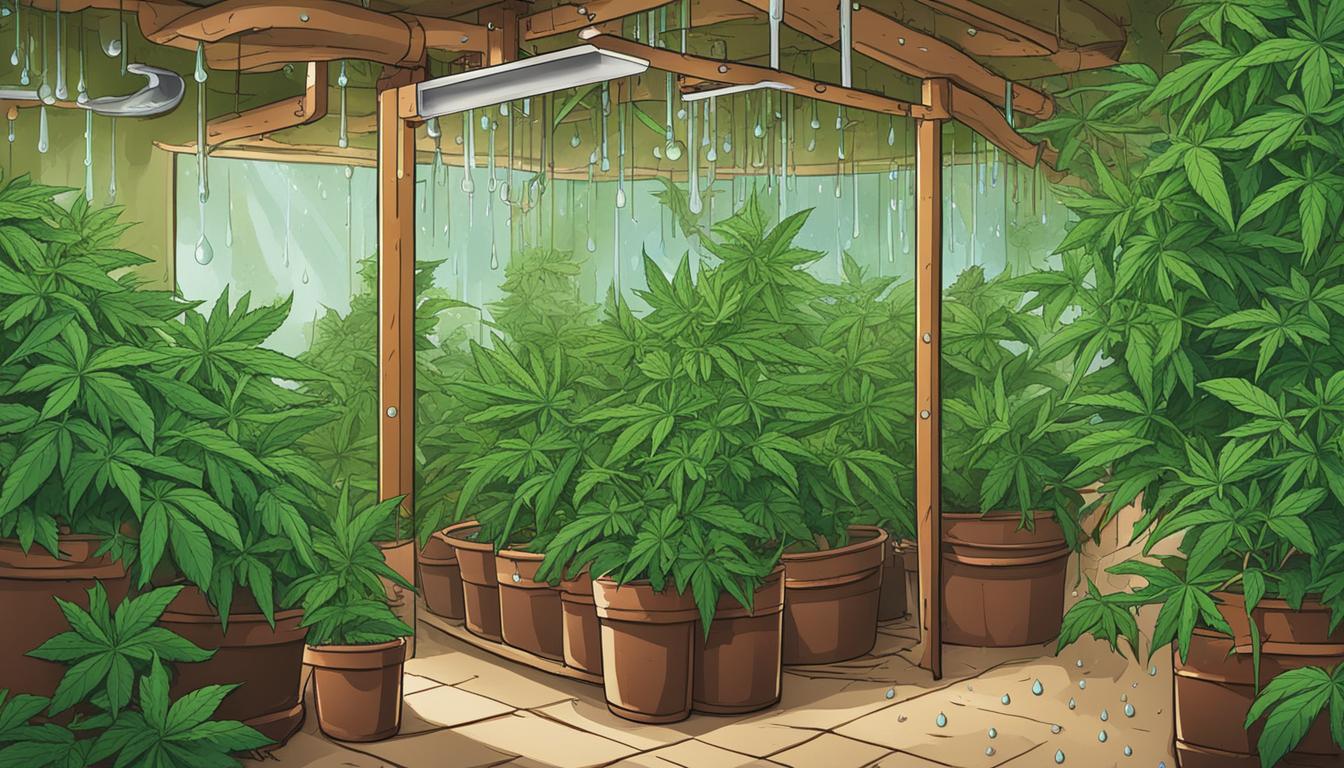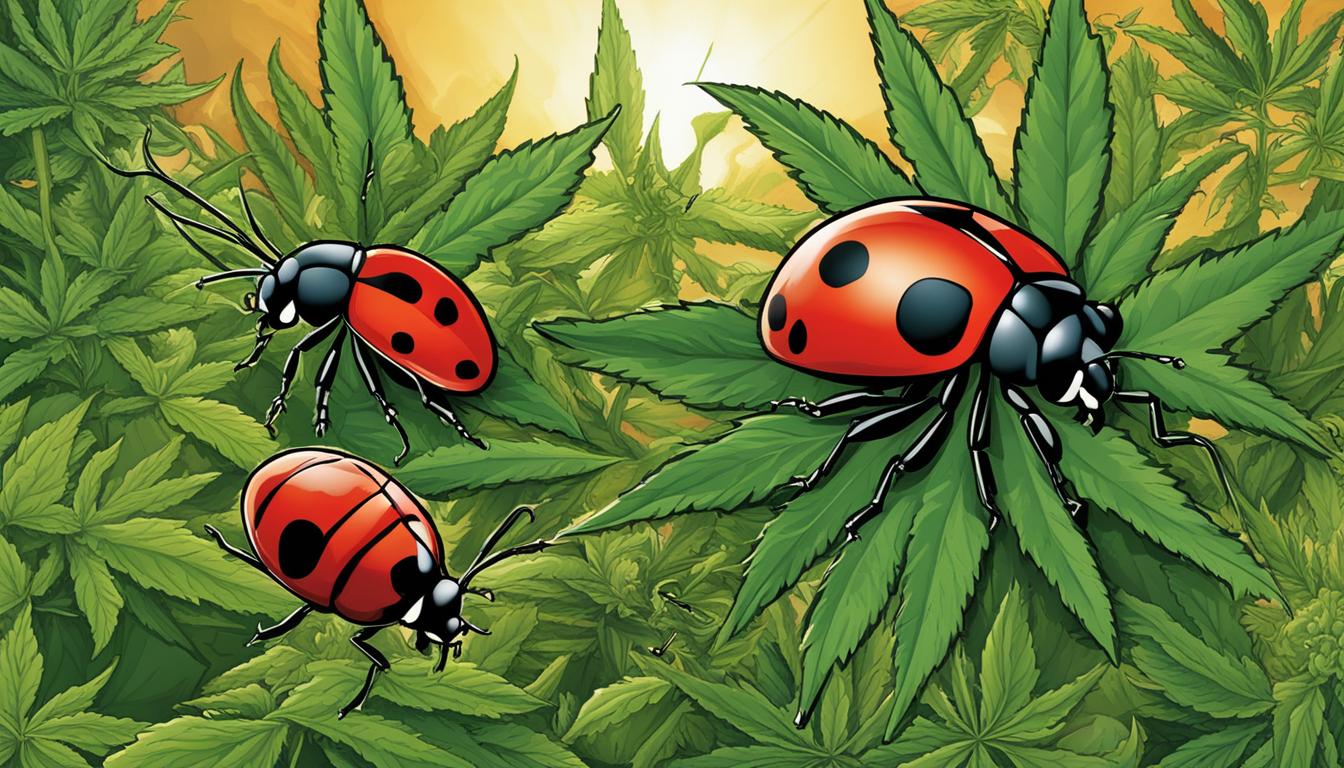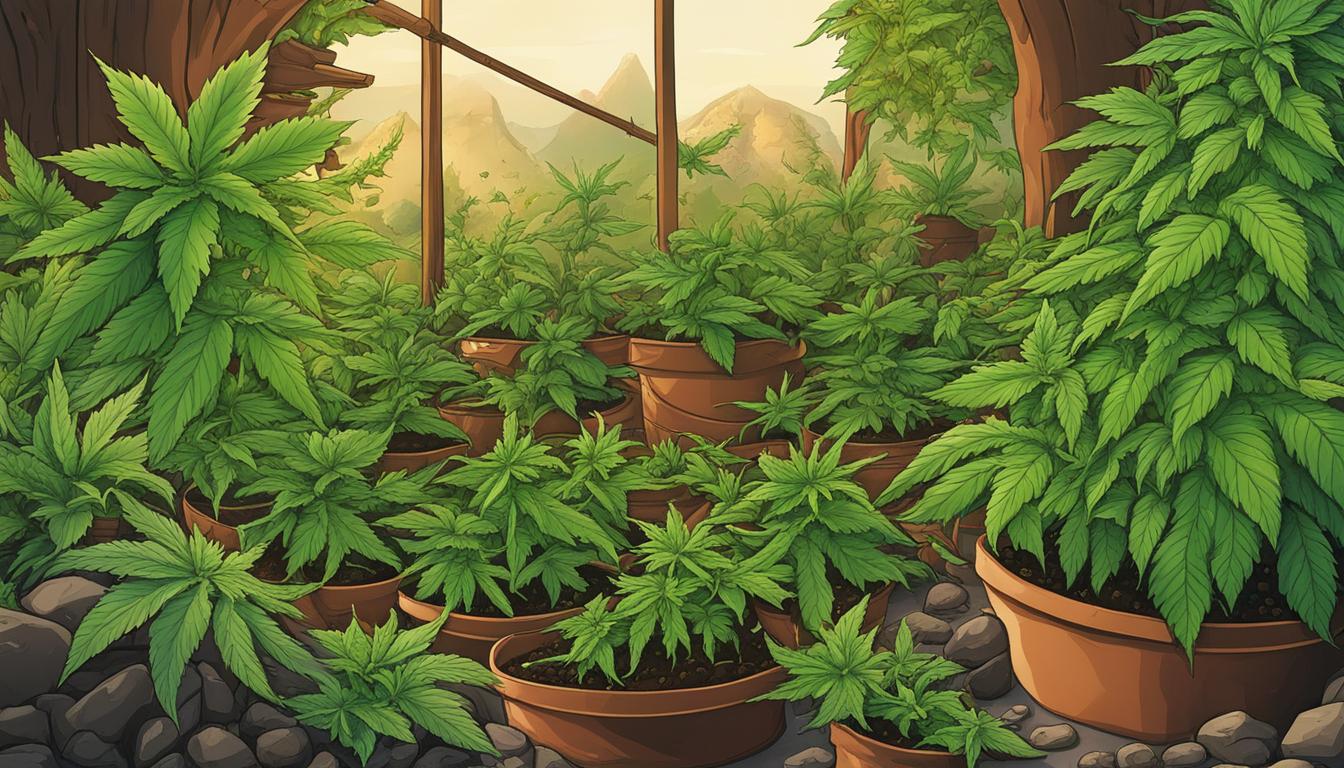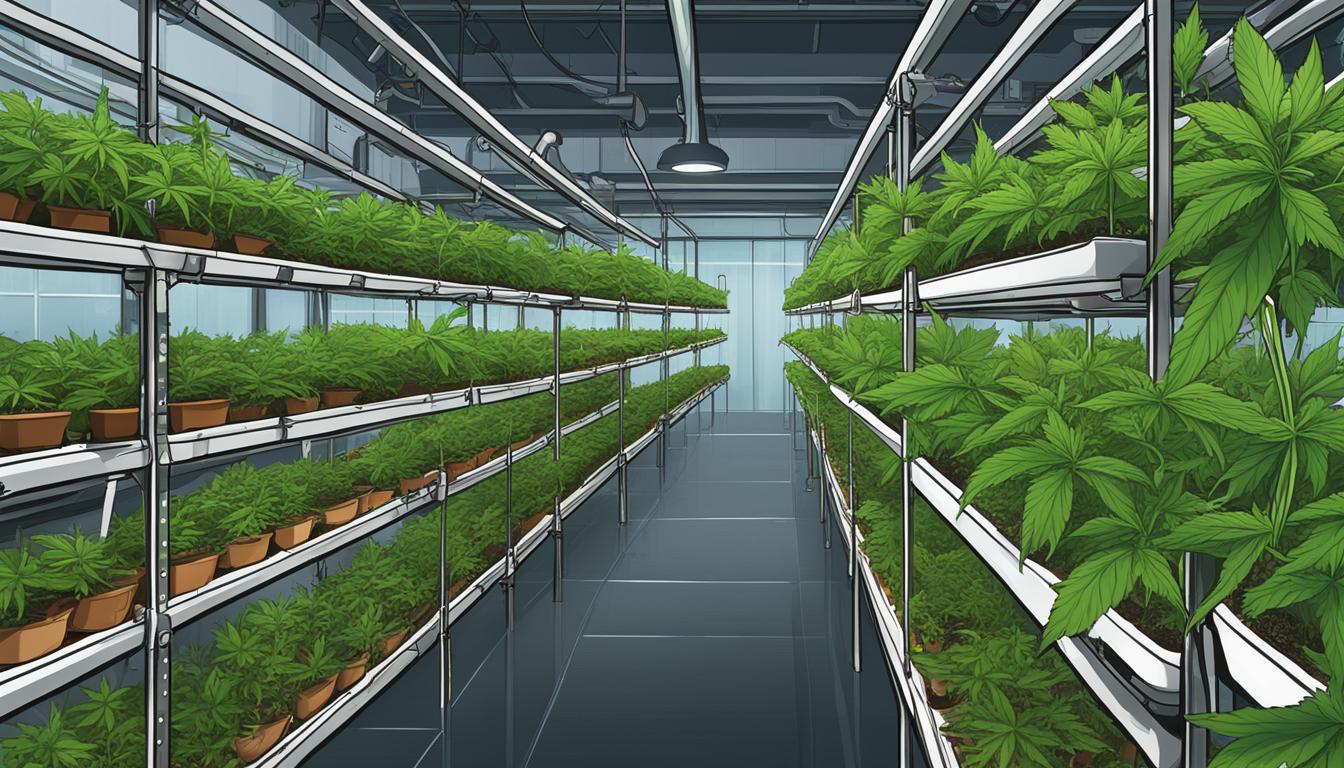If you are a cannabis cultivator, you undoubtedly want to produce the highest-quality buds possible. One way to achieve this is by maximizing terpene production in your plants. Terpenes are essential oils found in cannabis plants that give them their unique aroma, flavor, and effects. In this guide, we will explore various tips and techniques to help you optimize terpene production and elevate the quality of your cannabis.
Key Takeaways:
- Terpenes are aromatic compounds found in cannabis that contribute to its unique aroma, flavor, and therapeutic properties.
- Optimizing terpene production can enhance the overall quality and efficacy of your cannabis plants.
- Factors such as environmental conditions, nutrient management, and cultivation techniques can significantly affect terpene production.
- Harvesting and curing practices are crucial for preserving and enhancing terpene levels in cannabis.
- Experimenting with different techniques and strategies can help you unlock the full potential of terpene synthesis in your cannabis plants.
Understanding Terpenes in Cannabis
Before delving into maximizing terpene production, it’s crucial to understand the role of terpenes in cannabis. Terpenes are organic compounds responsible for the unique aroma and flavor of cannabis. In addition to their aromatic qualities, terpenes work synergistically with cannabinoids to create various therapeutic effects, making them a valuable component of the cannabis plant.
Terpenes in cannabis: There are over 100 terpenes found in cannabis, each with its distinct aroma, flavor, and therapeutic properties. Some of the most common terpenes found in cannabis include:
| Terpene | Aroma/Flavor | Therapeutic Properties |
|---|---|---|
| Myrcene | Musky, earthy | Sedative, anti-inflammatory, analgesic |
| Pinene | Pine, herbal | Alertness, memory retention, anti-inflammatory |
| Limonene | Citrus, lemon | Mood elevation, stress relief, anti-fungal |
Terpene synthesis in marijuana: Terpenes are synthesized in the trichomes of the cannabis plant, the same glandular structures where cannabinoids such as THC and CBD are produced. Terpenes are created through a process called the mevalonic acid pathway, which involves the conversion of isopentenyl pyrophosphate and dimethylallyl pyrophosphate into various terpenes. Environmental factors such as temperature, humidity, and light intensity can all influence terpene synthesis in cannabis plants.
Factors Affecting Terpene Production
Maximizing terpene production requires optimizing various growth factors and techniques. From temperature and humidity to selecting the proper cannabis strains, there are many factors to consider. By utilizing the following terpene growth techniques, you can enhance your cannabis plants’ terpene yield and content.
Optimizing Environmental Conditions
Environmental conditions play a significant role in terpene production. By controlling temperature, humidity, and light intensity, you can create a more favorable environment for terpene synthesis.
| Factors | Optimal Range |
|---|---|
| Temperature | 20-30°C (68-86°F) |
| Humidity | 40-60% RH |
| Light Intensity | 600-1000 PPFD |
As you can see from the table above, maintaining proper temperature, humidity, and light intensity can produce the best terpene yield in cannabis plants.
Selecting Terpene-Rich Cannabis Strains
The terpene content varies among different cannabis strains, making strain selection a crucial factor in terpene production. By selecting strains with high terpene content, you can increase your yield of desirable terpenes. Some popular terpene-rich strains include:
- Blue Dream
- Sour Diesel
- Gelato
- Pineapple Express
- OG Kush
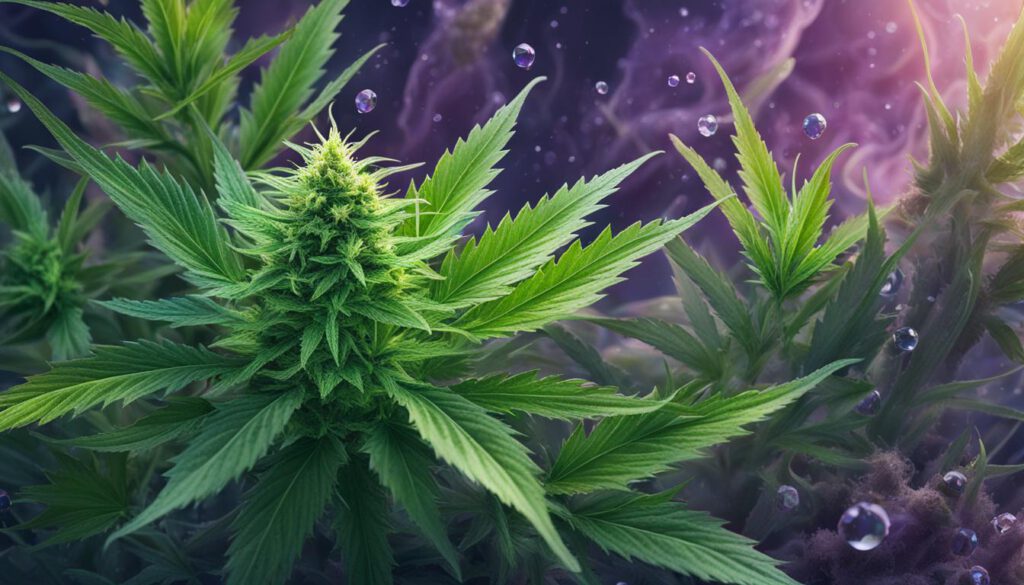
Proper Harvesting Techniques
Harvesting at the right time is another critical factor in maximizing terpene content. Waiting too long to harvest can cause a loss of terpenes, while harvesting too early can result in lower yields. Proper harvesting techniques include:
- Inspecting trichomes under a microscope to determine peak ripeness
- Cutting branches at a 45-degree angle to prevent excess moisture buildup
- Removing large fan leaves to improve airflow and terpene concentration
Conclusion
By optimizing the environmental conditions, selecting terpene-rich cannabis strains, and employing proper harvesting techniques, you can enhance your cannabis plants’ terpene yield and content. Experiment with these terpene growth techniques to elevate the aroma, flavor, and potency of your cannabis.
Maximizing Terpene Production Through Nutrient Management
Proper nutrient management is a critical aspect of cannabis cultivation that can significantly impact terpene synthesis. By optimizing nutrient levels, you can enhance the quality and quantity of terpenes produced by your cannabis plants.
The following nutrients and supplements can help improve terpene production:
- Mycorrhizal fungi: These beneficial fungi create a symbiotic relationship with the roots of cannabis plants, helping to increase nutrient uptake and enhance terpene production.
- Humic and Fulvic Acid: These organic acids can improve nutrient absorption and facilitate the uptake of essential micronutrients, leading to increased terpene synthesis.
- Phosphorus: This essential nutrient plays a crucial role in terpene synthesis and can significantly enhance aroma and flavor.
- Potassium: This macronutrient helps regulate plant metabolism and energy production, improving terpene quality and yield.
It is also important to maintain a balanced nutrient profile to avoid deficiencies or excesses that can harm plant health and terpene production. Consider using organic fertilizers and avoiding harsh synthetic chemicals that can damage soil biology and decrease terpene content.
Cultivation Techniques for Boosting Terpene Production
Maximizing terpene production in cannabis plants requires employing specific cultivation techniques. By implementing these techniques, you can increase the overall terpene content in your cannabis. Here are some terpene boosting strategies to try:
Low-Stress Training
Low-stress training is a method of training cannabis plants to grow in a particular direction to increase terpene production. By gently bending and tying down the stems, you can manipulate the plant’s growth and expose more of the buds to light. This technique also allows for better nutrient absorption, resulting in increased terpene content.
Pruning
Pruning, or selectively removing certain parts of the plant, can increase terpene production by directing the plant’s energy towards the remaining buds. By removing excess leaves and branches, you can improve airflow and light penetration, resulting in healthier, more terpene-rich buds.
Defoliation
Defoliation is similar to pruning but involves removing nearly all of the plant’s leaves during specific growth stages. This technique helps increase terpene production by forcing the plant to focus its energy on the remaining buds, resulting in larger and more potent flowers.
Organic and Natural Practices
Employing organic and natural practices can also help boost terpene production in cannabis plants. By avoiding the use of synthetic pesticides and fertilizers, you can create a healthier and more natural growing environment, promoting terpene synthesis. Additionally, using natural pest control methods and compost tea can help foster a healthy microbiome in the soil, leading to increased terpene content in the plants.
Experimenting with these techniques can help you maximize terpene production in your cannabis plants. By utilizing a combination of strategies, you can create more flavorful and potent buds for an enhanced cannabis experience.
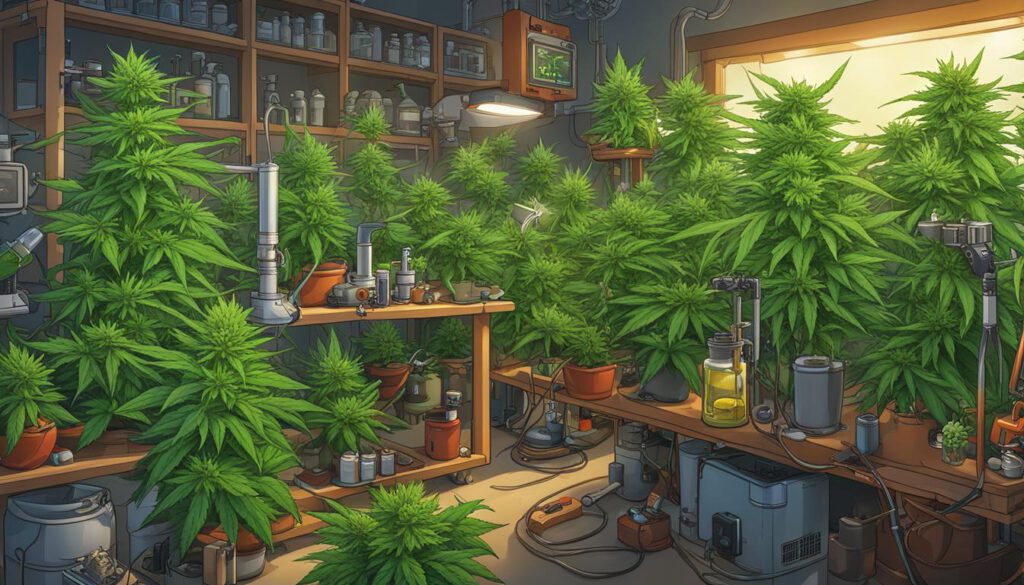
Harvesting and Curing for Optimal Terpene Preservation
Harvesting and curing are two essential steps in the cannabis cultivation process that are critical for preserving and enhancing terpene levels. Proper timing, temperature, and humidity levels during these stages can mean the difference between a potent and aromatic harvest or a lackluster one. Here are some tips to ensure your cannabis buds retain their terpene profiles:
Harvesting
The timing of harvesting is crucial for preserving terpene levels. Waiting too long can lead to a decrease in aroma and flavor, while harvesting too early can result in a lack of potency. The ideal time to harvest is when the buds are fully mature and the trichomes have turned from clear to milky white or amber.
Avoid harvesting during the hottest part of the day or when the buds are wet with dew. Instead, wait for a dry day and harvest in the morning after the dew has evaporated. This will prevent excess moisture from accumulating on the buds and reduce the risk of mold or mildew growth.
Drying
After harvesting, the buds should be dried in a cool, dry, and dark place with adequate airflow. The ideal temperature for drying cannabis is between 60-70°F with humidity levels around 50%. Drying too quickly can cause the buds to become brittle and lose their terpenes, while drying too slowly can result in mold growth.
Hang the buds upside down on a line or drying rack, making sure they are not touching each other. This will promote even airflow and prevent moisture buildup. After 5-7 days, the buds should feel dry to the touch and the stems should snap when bent.
Curing
Curing is the final step in the process of preserving terpene levels in cannabis buds. After drying, place the buds in an airtight container such as a mason jar or vacuum-sealed bag. Store the containers in a cool, dark place with a temperature between 60-70°F and humidity levels between 55-65%.
During the first few days, open the containers once or twice a day to release any excess moisture. After the first week, open the containers once a week to allow fresh air to circulate. The curing process can take anywhere from 2-8 weeks, depending on the desired flavor and aroma.
Conclusion
Congratulations! You’ve made it to the end of this comprehensive guide on maximizing terpene production in cannabis plants. By now, you should have a good understanding of the role of terpenes in cannabis, the factors that affect terpene production, and the various techniques and strategies that can be employed to boost terpene synthesis.
Remember that terpenes play a significant role in the aroma, flavor, and therapeutic properties of cannabis. By optimizing terpene production, you can enhance the overall quality and efficacy of your cannabis plants.
Experiment with different techniques, such as adjusting environmental conditions, nutrient management, cultivation techniques, and harvesting and curing practices, to find the best combination that works for you and your cannabis plants.
With the right knowledge, dedication, and attention to detail, you can unlock the full potential of terpene synthesis and take your cannabis cultivation endeavors to the next level.
FAQ
What are terpenes?
Terpenes are organic compounds produced by plants, including cannabis, that are responsible for the wide range of aromas and flavors. They also work synergistically with cannabinoids to create various therapeutic effects.
Why is maximizing terpene production important?
Maximizing terpene production in cannabis plants enhances the overall quality and efficacy of the plants. Terpenes contribute to the unique aroma, flavor, and therapeutic properties of cannabis.
What factors affect terpene production?
Several factors can influence terpene production in cannabis plants, including environmental conditions (temperature, humidity, light intensity), strain selection, and proper harvesting techniques.
How can nutrient management help maximize terpene production?
Proper nutrient management plays a crucial role in maximizing terpene production. This involves selecting the right nutrients and supplements, maintaining a balanced nutrient profile, and understanding the impact of different nutrient ratios on terpene synthesis.
What cultivation techniques can boost terpene production?
Certain cultivation techniques such as low-stress training, pruning, and defoliation can significantly boost terpene production in cannabis plants. Employing organic and natural practices can also promote terpene synthesis.
How can I preserve and enhance terpene levels during harvesting and curing?
Proper harvesting and curing techniques are essential for preserving and enhancing terpene levels in cannabis. This involves harvesting at the right time, drying buds properly, and implementing post-harvest preservation methods to maximize the aromatic and therapeutic qualities of the cannabis.
Why is it important to experiment with different methods?
Experimentation with different methods allows you to unlock the full potential of terpene synthesis in cannabis plants. By understanding terpenes, optimizing environmental conditions, managing nutrients, implementing cultivation techniques, and employing proper harvesting and curing practices, you can elevate the aroma, flavor, and efficacy of your cannabis plants.


